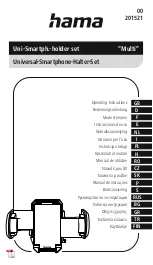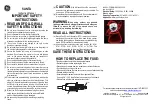
20
Astro Time-Lapse
photography faces the same challenges as astrophotography in
general. Namely, due to the dimness of the subject (the night sky), longer exposures are
required to record sufficient detail, and tracking is needed to prevent star trailing during
those exposures. But there are some differences as well.
For astrophotography, the region of sky that is being photographed moves over the course
of the exposure sequence. We generally repeat the process to obtain a sequence of
images, all of the same subject, and all framed identically. This means that our camera
is pointing in a different direction at the end of the sequence compared to where it was
pointing at the beginning. This occurs because our subject has moved and the camera has
moved along with it.
In
Astro Time-Lapse
we take multiple images as well, and the camera moves with each
exposure. But, unlike in astrophotography,
Star Adventurer 2i
returns the camera to the
starting point after each exposure is completed.
Now, when the frames are sequenced into a video, you see the night sky moving about a
fixed terrestrial reference point. By finding locations with beautiful foreground settings you
can produce breathtaking videos of the sky moving over your location. [Visit our YouTube
channel to see some examples].
Astro Time-Lapse
Special Requirements For Astrophotography and Astro Time-Lapse
In order to track the movement of the night sky the camera has to be continuously moved
to offset the rotation of the Earth in order to hold the subject perfectly steady on the sensor.
The rotation of the camera needs to take place about an axis that is parallel to Earth’s
rotational axis, and therefore, the two axes must be aligned in order for tracking to work
correctly.
















































